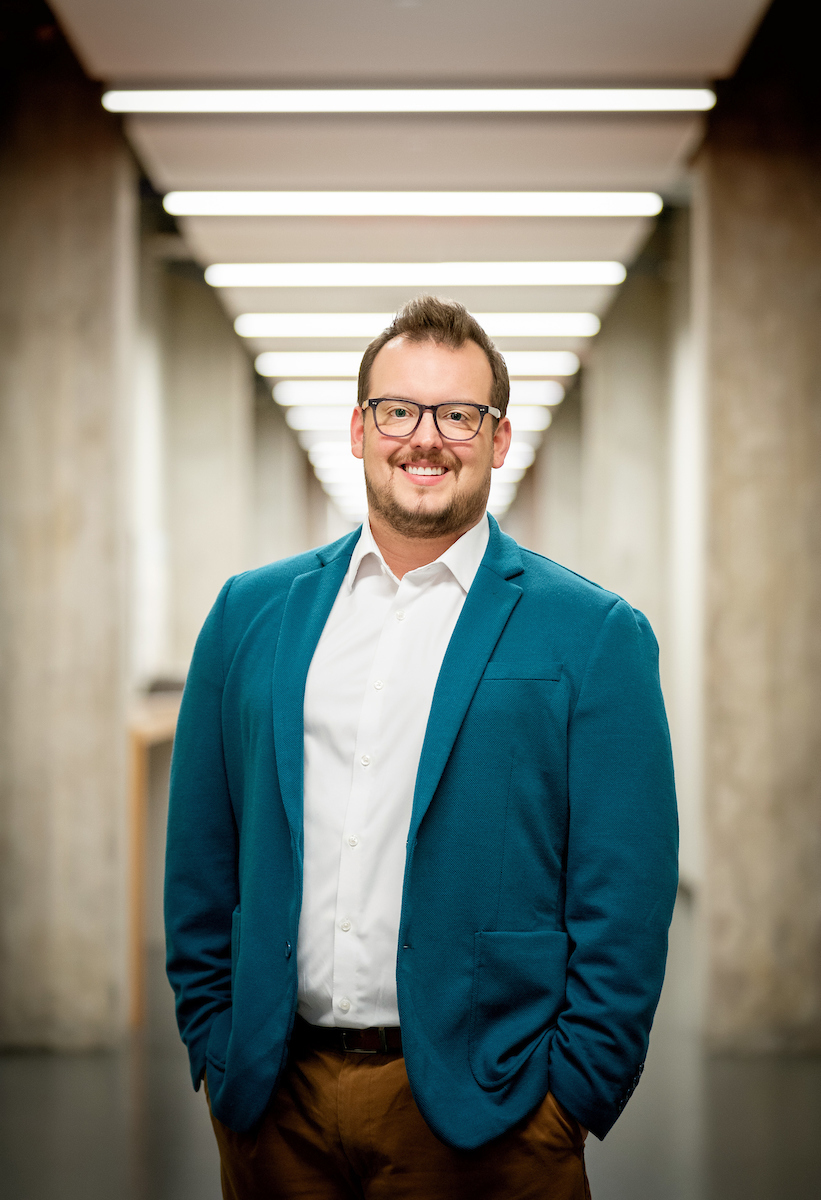We are proud of our alumni and the numerous ways they facilitate meaningful change- in their organizations, communities, and even globally. Master of Leadership graduates represent a broad range of industries in diverse roles. Our graduates leave with greater skills in self and social awareness, allowing them to take on the responsibilities of agile, future oriented leaders suited to address ever-changing needs.
 Nathan Peyer-Stensrud ’21
Nathan Peyer-Stensrud ’21
Augsburg Alumni Nathan Peyer-Stensrud was recently appointed to serve on the Enterprise DEI Council, just one of eleven global members within his international organization. Peyer-Stensrud serves as the Business Unit Coordinator for the Engineered Materials Center of Excellence for Additive Manufacturing (3D Printing) with a large, multi-national contract manufacturing services provider. In his role, Peyer-Stensrud helps translate business strategy into work programs and processes for the Additive Manufacturing business unit. “This allows me to help our team bring products and services to our customers by using highly engineered materials and refined processes while reducing time to market and minimizing the costs to the manufacturing plant.”
As part of his appointment to the Enterprise DEI Council, Peyer-Stensrud provides C-level leadership with new perspectives, ideas and solutions- essentially serving as a mentor and advocate for progress within the organization. Further, the goal of this council is to work with individual sites to be more inclusive, increase representation and pave the path to more Peyer-Stensrud and his colleagues are constantly asking “who isn’t at the table, and then advise each business unit accordingly.” Peyer-Stensrud is not new to supporting DEI efforts within his organization, but attributes this recent appointment to the additional exposure and skill development he gained by completing his Master of Arts in Leadership at Augsburg University.
“Organizations are rapidly evolving and face many internal and external influences. By helping our employees embrace and adopt changes in our organizations in response to these influences, we as leaders can help create wins and opportunities for both our organizations and our greatest assets- our people.”
Peyer-Stensrud chose a more leadership focused graduate degree because he saw that his employer already provided some “MBA related skills in house”, and he wanted to dive deeper into inclusive, equity-minded leadership. He appreciated the depth and breadth of the program and the diversity of perspectives brought by colleagues from a variety of industries from non-profits to hospitals, to technology, or even manufacturing. Peyer-Stensrud said, “I love that others have worked in a variety of industries and backgrounds- real world examples help push you think deeper about what we’re talking about- look at it through a different lens. It’s not just hypothetical. You are inspired to consider, what else can I offer? You’re exposed to different ideas and figure out different paths to the shared end goal.”
Peyer-Stensrud also appreciated the structure and dynamic of his experience with faculty within the program. He was especially impressed that faculty served as “mentors and training colleagues,” instead of modeling the traditional structural hierarchy of higher education. “The classes are small so your teachers know you and invest in you.” This fostered a class experience that felt more like a group of collaborators that supported one another’s growth.
Taking classroom learning and being able to apply to day to day work, while also sharing work experiences in the classroom added additional value for Peyer-Stensrud. “Much of the work was around organizational culture- what does it look like and how it manifests. how it drives decisions and collaborations in organizations. I deepened my understanding of the ways that organizational members interact, and how leaders embrace differences in team members.” Peyer-Stensrud further explained that so much of the organizational culture influences how organizations function- or don’t. Peyer-Stensrud noted that he learned how to “best navigate and leverage the diversity of our teams at work,” examining, “how do we connect, reach, and foster growth in a diverse team.”
Peyer-Stensrud has shared his Augsburg experience with colleagues and encourages them to consider an Augsburg MAL. He cites Augsburg’s “small for our students, but big for the world,” as it relates to the values and mission of the university. “It’s about how the curriculum across the program helps students be prepared to go out and change the world- regardless of background and experience. What that looks like is unique to the individual, and for them to determine based on the impact they want to make. It equips students to have the tools and perspectives to make an impact in the world, locally in the community, in their organizations and in broader, global communities.”
